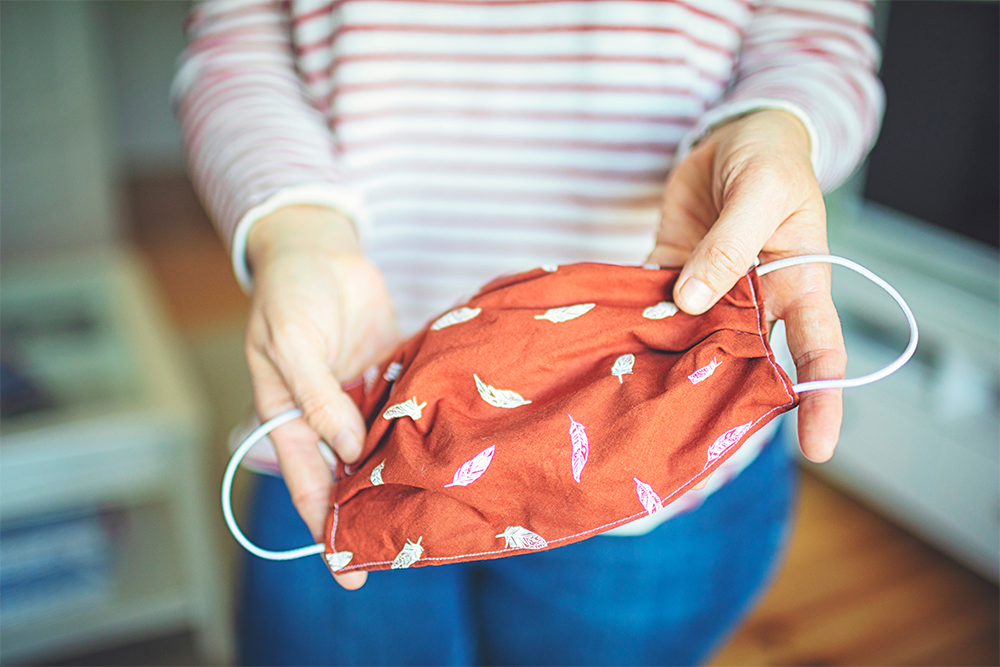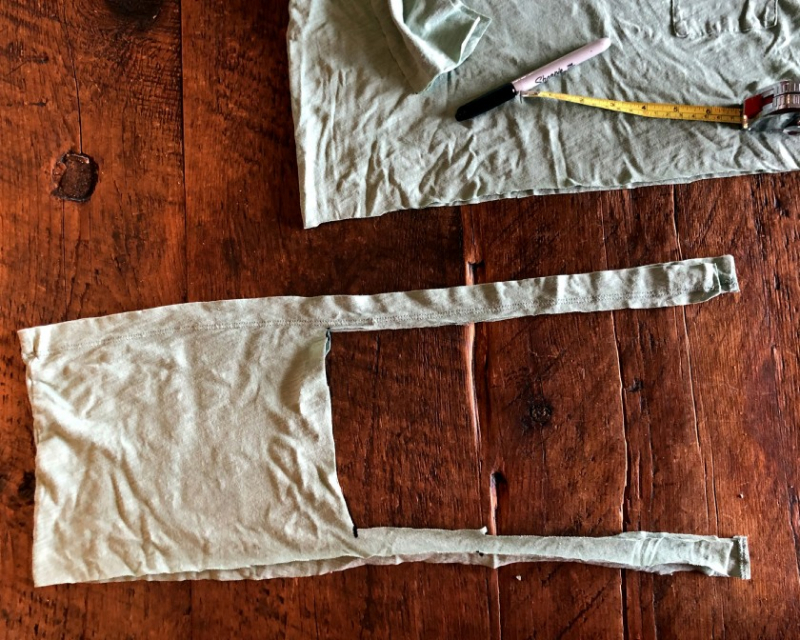Facing it together: How to make CDC-approved masks at home
Borrowed from
https://www.life360.com/blog/category/life360/

The CDC now recommends that we all wear cloth face masks in public to help protect ourselves and others. Rather than buy online, your family can make them at home with supplies you already have — even if you don’t sew!
The no-sew bandana face covering:
Materials you’ll need
- 1 bandana, or square cotton cloth approximately 20” x 20”
- 2 rubber bands or hair ties
How to make it
- Fold the bandana in half.
- Fold the top part down.
- Fold the bottom part up.
- Place rubber bands or hair ties on either end, about 6” apart.
- Fold each side to the middle of the bandana and tuck.
- Place the rubber bands around your ears.
The no-sew, quick cut T-shirt face covering:
Materials you’ll need
- T-shirt
- Scissors
- Need a little measuring guidance? Print out our template.
How to make it
- Measure 7”-8” from the bottom of your T-shirt and cut.
- Cut into that section about 6”-7” to form your face ties.
- Tie strings around your neck, and then over the top of your head.
The sewn face mask:
Materials you’ll need
- 2 10” x 6” rectangles of cotton fabric (Use tightly woven cotton, such as quilting fabric or cotton sheets. You can also use T-shirt fabric.)
- 2 6” pieces of elastic (or rubber bands, string, cloth strips, or hair ties)
- Needle and thread (or bobby pin)
- Scissors
- Sewing machine
- Need a little measuring guidance? Print out our template.
How to make it
- Stack the 2 10” x 6” rectangles of cotton fabric on top of each other. You’ll sew the mask as if it was a single piece of fabric.
- Fold over the long sides ¼” and hem.
- Fold the double layer of fabric over ½” along the short sides and stitch down.
- Run a 6” length of ⅛”-wide elastic through the wider hem on each side of the mask. These will be the ear loops.
- Use a large needle or a bobby pin to thread it through. Tie the ends tight.
- Gently pull the elastic so the knots are tucked inside the hem. Gather the sides of the mask on the elastic and adjust so the mask fits your face.
- Securely stitch the elastic in place to keep it from slipping.
TIP: Don’t have elastic? Use hair ties or elastic head bands. If you only have string, you can make the ties longer and tie the mask behind your head.
Some more helpful face mask tips and FAQs:
- Wash your hands for 20 seconds with soap and water before putting on your mask.
- Make sure your face mask covers your mouth and nose, and fits snugly but comfortably against the sides of your face.
- Avoid touching your face while you’re wearing a face mask.
- Grab your mask by the straps or back to remove it (not from the front) and then immediately wash your hands.
- Wash the mask immediately to avoid contaminating your belongings.
- The CDC advises the use of face masks in public settings where it is difficult to maintain social distancing, such as grocery stores and pharmacies.
- Face masks are also recommended to help slow the spread of the virus and help people who may have it and not know they are transmitting it to others.
- The CDC recommends not purchasing surgical masks or N95 respirators, as they should be saved for healthcare workers.
For more information from the CDC about learning how to slow the spread of COVID-19 using cloth face coverings and masks, click here.
Disclaimer: Cloth face coverings should not be placed on young children under age 2, anyone who has trouble breathing, or is unconscious, incapacitated, or otherwise unable to remove the cloth face covering without assistance




No comments:
Post a Comment